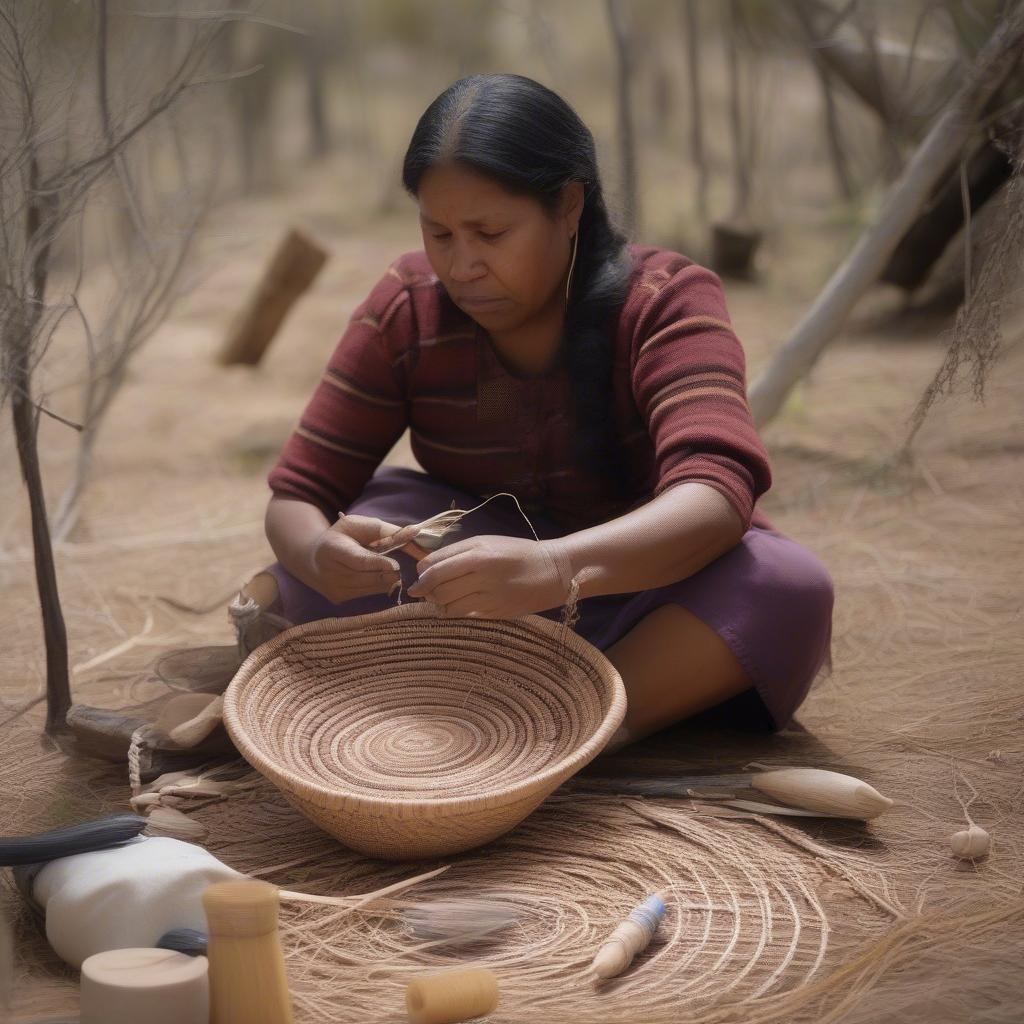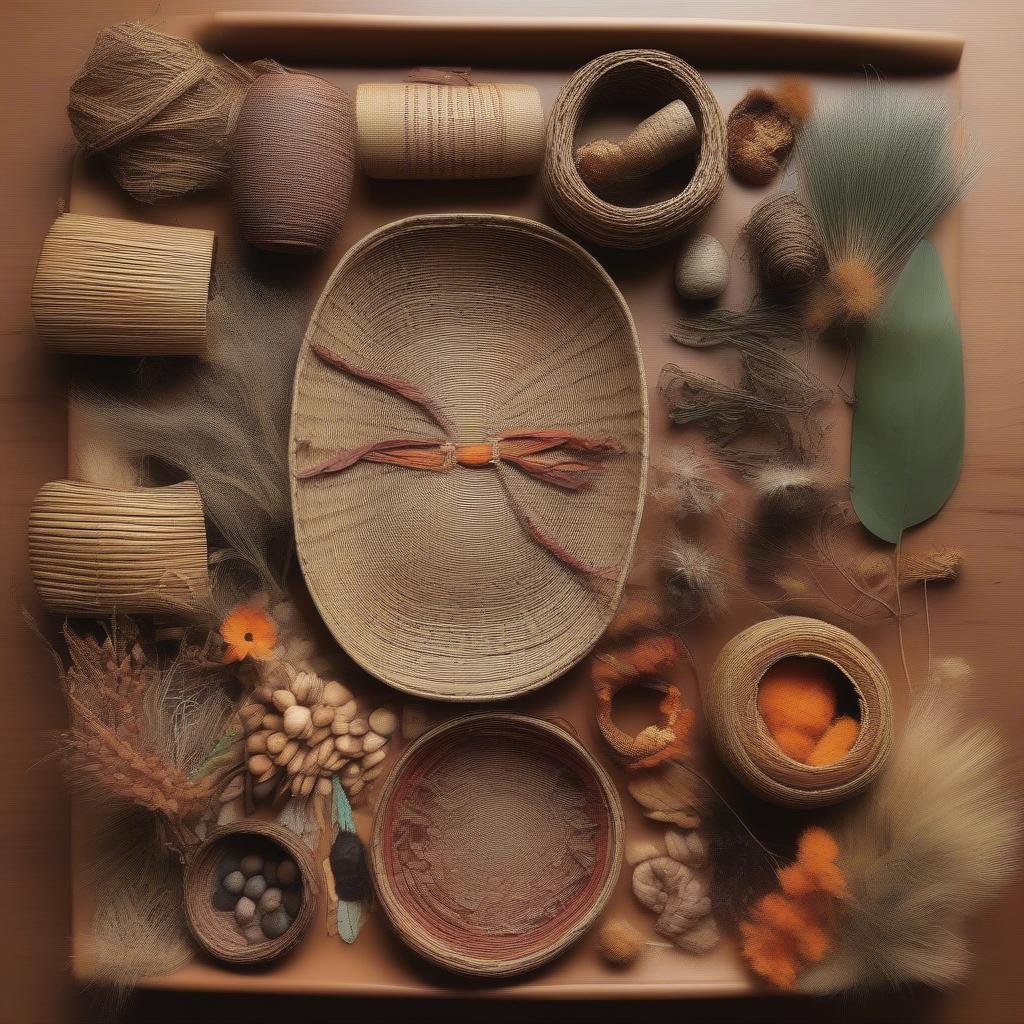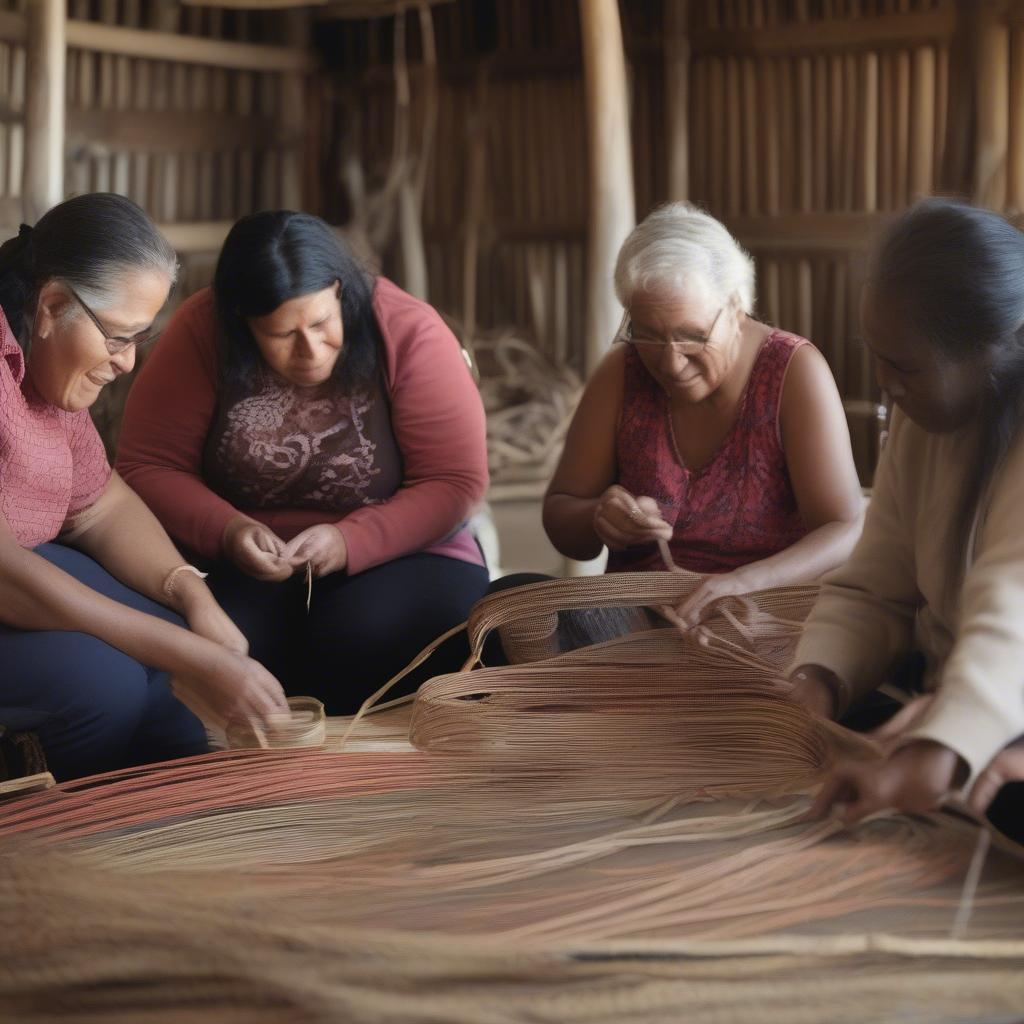Basket Weaving
Aboriginal Basket Weaving Techniques: A Journey Through Indigenous Artistry
Aboriginal Basket Weaving Techniques represent a rich cultural heritage passed down through generations. These intricate techniques, unique to various Aboriginal communities across Australia, are more than just craft; they are a tangible connection to the land, stories, and traditions that define Aboriginal identity. This article delves into the fascinating world of Aboriginal basket weaving, exploring its diverse methods, materials, and cultural significance.
Unveiling the Secrets of Aboriginal Basket Weaving Techniques
 Aboriginal woman demonstrating the coil weaving technique
Aboriginal woman demonstrating the coil weaving technique
Aboriginal basket weaving techniques vary widely across different regions, reflecting the unique environments and resources available to each community. Some common techniques include coiling, twining, and plaiting. Coiling involves spiraling a foundation material, such as grasses or vines, and stitching it together with another fiber. Twining uses two or more flexible elements twisted around each other to create the basket structure. Plaiting, similar to braiding, interlaces strands to form a woven surface. These methods, often combined with intricate decorative embellishments, result in baskets that are both functional and beautiful works of art. For example, you can find more information about indigenous basketry at basket weaving indigenous.
Exploring the Diverse Materials of Aboriginal Basket Weaving
 Variety of natural materials used in Aboriginal basket weaving
Variety of natural materials used in Aboriginal basket weaving
Natural materials are at the heart of Aboriginal basket weaving. Different plant fibers, including grasses, vines, bark, and roots, are carefully selected and prepared for weaving. The choice of materials depends on the desired basket type, its intended use, and the local environment. The preparation process often involves soaking, drying, and sometimes dyeing the fibers to achieve the desired flexibility and color. These sustainable practices ensure that basket weaving remains a harmonious interaction with nature.
The Cultural Significance of Aboriginal Basket Weaving
Aboriginal basket weaving is deeply intertwined with storytelling, ceremonies, and everyday life. Baskets are not just utilitarian objects; they are expressions of cultural identity and ancestral knowledge. The patterns and designs woven into the baskets often depict stories from the Dreaming, connecting the weaver to the spiritual realm. Baskets also play essential roles in ceremonies, food gathering, and trade within and between communities. You can even learn about dilly bag weaving, a traditional form of Aboriginal basket weaving, at dilly bag weaving.
Preserving and Promoting Aboriginal Basket Weaving Traditions
 Group of people participating in an Aboriginal basket weaving workshop
Group of people participating in an Aboriginal basket weaving workshop
Today, Aboriginal artists and communities are actively working to preserve and promote their basket weaving traditions. Workshops and classes are offered to share these ancient skills with younger generations and broader audiences. This ensures that the cultural knowledge embedded in each basket continues to be passed down, fostering cultural pride and ensuring the survival of this unique art form. Looking for information on Aboriginal basket weaving in Melbourne? Check out aboriginal basket weaving melbourne.
Maria Watson, a renowned Aboriginal weaver from the Ngarrindjeri nation, emphasizes the importance of respecting the cultural protocols surrounding basket weaving. “Each basket holds the knowledge and stories of our ancestors. It’s crucial to approach this art with reverence and understanding.”
David Thompson, an anthropologist specializing in Aboriginal art, explains, “Aboriginal basket weaving is a living testament to the ingenuity and creativity of Indigenous Australians. It’s a vibrant expression of their connection to the land and their enduring cultural heritage.”
Conclusion: A Legacy of Weaving
Aboriginal basket weaving techniques represent a powerful link to the past and a vibrant expression of cultural continuity. By understanding and appreciating these intricate techniques, we gain a deeper insight into the rich cultural tapestry of Aboriginal Australia. Explore the artistry and cultural significance of Aboriginal basket weaving, and perhaps even discover the joy of creating your own woven masterpiece. You can find helpful resources on Aboriginal basket weaving, such as books and past workshops, at aboriginal basket weaving books and basket weaving workshops melbourne 2018.
What are some common Aboriginal basket weaving techniques? Coiling, twining, and plaiting are frequently used.
What materials are used in Aboriginal basket weaving? Natural materials like grasses, vines, bark, and roots.
Why is Aboriginal basket weaving culturally significant? It connects to stories, ceremonies, and everyday life.
How are Aboriginal basket weaving traditions being preserved? Through workshops, classes, and community engagement.
Where can I learn more about Aboriginal basket weaving? Various resources and workshops are available online and in communities.
Need help with your basket weaving endeavors? Contact us in Hanoi, Vietnam or at Tech Avenue, Suite 12, San Francisco, CA 94105, USA. We offer 24/7 customer support.
